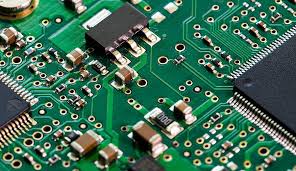Datasheet FPCBs: Where Flexibility Meets Functionality
Flexible Printed Circuit Boards (FPCBs), Flex Circuits, are a technology that embodies the hotbed of innovation in circuit design and application. Flexible Printed Circuit Boards, or FPCBs, are a type of PCB built on a flexible high-tech plastic substrate so they can fit within spatial constraints or be bent without being destroyed.
The Structure of FPCBs
The detailed structure of FPCBs FPCBs are typically made up of a flexible substrate which is the most important element in this type of PCBs, it is mostly of material types such as polyimide or polyester film. The circuits are “flexible” because the circuits that are cut away—the sections that become the “puzzle pieces”—are made from those foldable materials. Moreover, they sometimes use very flexible electronic components like conductive polymer thick film allows for some flexibility of circuits.
Why Choose FPCBs? Key Advantages Outlined
Improved Ruggedness andDependability
The long-life FPCBs are widely regarded for their reliability. The flexibility of these boards alleviate stress on electronic connections which in turn leads to low failure rates in applications subject to motion or thermal cycling. According to data[1], devices employing FPCBs have a mechanical durability that can be 2x improved by those using rigid PCBs.

Space and Weight Reduction
Yes, in modern times, while everyone else is heading towards miniaturisation and portability, FPCBs are used virtually in drivers seat these days. They are remarkably thinner and lighter than rigid PCBs, making electronic assemblies 70% + lighter in weight. This makes them good candidates for 21st century lightweight devices like smartphones, wearable technology, and aerospace electronics.
Simplifying the More Intricate Connections
Due to their inherent flexibility, FPCBs, which enables them to fit in the small or unusual shapes spaces and simplifies the development of complex electronic interconnections. They can be arranged into 3D shapes to wrap around buildings, fold over edges, and build up multiple layers. This versatility is vital in high-density electronic applications.
Cheaper Manufacturing, AssemblyThe cost of setting up initial FPCB production is expensive, mostly due to cost of materials and technology used… but the long term savings are huge. FPCBs can blend several functions into one piece of circuitry, thus mitigating the need for connectors and saving assembly time and multiple discrete component handling costs.
Great for Real Time Applications
FPCBs are ideally for industries needing electronics to handle constant movements. So these things like flexible screen, foldable smartphones, dynamic electronics, are examples of what can be achieved by graphene in the near future! They are nearly indestructible and withstand flexing more times than any other connector.
How to Use FPCBs in Your Projects
fpcb solutions, then, are a direct route to maximum design and function creativity for engineers and designers wanting to incorporate flexibility and efficiency into their projects. Their use in so many different fields reflects their performance, and the benefits that they provide to today's electronic devices.
In simple words, FPCBs is a PCB technology which combines the flexibility with the rigid PCB performance. They allow lighter, more efficient, and such electronic products are highly reliable in order to yield to the biggest technologies of tomorrow.
